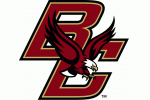Injuries are common in football, and they can range from mild to severe. The most common injuries are strains and sprains, but more serious injuries such as concussions and broken bones can also occur.
:format(jpeg)/cdn.vox-cdn.com/uploads/chorus_image/image/42578240/457089968.0.jpg)
Let’s delve deeper into the most common kinds of football injuries.
Foot Injuries
In football, foot injuries are unfortunately quite common, and can often be career-threatening. From sprained ankles to broken bones, there are a number of different ways that the feet can be hurt while playing the game.
Torn ACL
One of the most common injuries in football is a torn ACL. ACL tears are incredibly painful, and they can cause severe instability.
This type of injury usually requires surgery to repair, and recovery is lengthy. However, it can be treated with sports medicine techniques.
Achilles Tendonitis
Achilles tendonitis is another common injury that can cause significant pain. It can cause the player to miss up to four to six months of activity. Another common football injury is a sprained ankle.
Despite the severity of this type of injury, it can be easily treated by elevating and icing the affected area and taking anti-inflammatory medication.
Shoulder Injuries in Football Players
Shoulder injuries in football players can be quite common. In fact, shoulder injuries occur in almost all sports.
Because the shoulder is not built for strength, there is often a large amount of stress placed on the joint. And football players endure repeated heavy impacts on the shoulder.
The first step in treating a shoulder injury is rest and ice. After this, physical therapy may be commenced. The primary goal of physical therapy is to minimize swelling and regain strength and range of motion in the shoulder.
Stretches are immeasurably important in the rehabilitation process. They help to increase flexibility and reduce the risk of future injury. Here are a few stretches that should be performed regularly to help heal a shoulder injury:
Pec stretch: Clasp your hands behind your back and straighten your arms. Gently pull your hands away from your body. Hold for 30 seconds.
Triceps stretch: Bend your elbow and reach up behind your head, placing your hand on your upper back. Use your other hand to grab the bent elbow and pull it closer to your head. Hold for 30 seconds.
Shoulder rolls: Stand with good posture and roll your shoulders backward 10 times. Repeat this motion going forward 10 times.
Doorway stretch: Place your forearm on a door frame at shoulder height. Step forward with the opposite leg and lean into the stretch. Hold for 30 seconds and repeat on the other side.
Internal rotation: Lie on your back with a pillow under your affected shoulder. Place your arm across your body with the elbow at a 90-degree angle. Use your opposite hand to apply gentle pressure to the elbow, pushing it closer to your body. Hold for 30 seconds and repeat on the other side.
Supraspinatus stretch: Reach your arm across your body and grab the elbow with your opposite hand. Pull the elbow across your body until you feel a stretch in the shoulder. Hold for 30 seconds and repeat on the other side.
The rehabilitation program will also include exercises to strengthen the shoulder muscles.
While shoulder injuries in football are common, they can also be particularly severe. A 2013 study reported that nearly two thousand players suffered a shoulder injury in the NFL over twelve seasons.
Of these, 727 of the injuries involved the acromioclavicular joint (AC joint), which connects the scapula to the collarbone. These two bones are the only joint between the shoulder and the rest of the body.
Injuries to the shoulder can range from instability to labral tears and dislocations. The incidence of shoulder injuries in football has increased.
Most cases of glenohumeral instability are stabilized by surgery. However, there are some risks associated with operative intervention.
Football concussions
Concussions are injuries that affect the brain. These injuries often cause symptoms like headaches, confusion, and memory problems.
These symptoms may also last weeks or months. There's currently no way to prevent concussions in football. But players can take precautions and protect themselves by wearing a helmet.
One of the most important precautions is to take an unspecified amount of time off the field after a football concussion. A player should be out of the game for at least 24 hours. If that isn't possible, the athlete should be evaluated by an independent neurological consultant.
Football concussions can be very severe. A concussion can require two weeks of rest, and some players have claimed that they have suffered as many as thirteen concussions during their careers.
The pressure to play through a concussion can make a player ignore the symptoms of his or her concussion. But failing to report an injury can be dangerous. In the case of an NFL player, reporting symptoms is especially important.
A study's findings should send a strong message to the NCAA. The interventions made by these institutions have had only a limited effect on concussion rates during preseason practices.
The researchers recorded over half a million head hits during these practices.
Takeaway
Ankle, foot, and spinal cord injuries can be severe. Athletes should always wear the correct protective gear. Proper tackling techniques can help prevent head and neck injuries.
Coaches should emphasize correct tackling techniques during practices. In addition, keeping fit and strong will also help prevent injuries.
Injuries sustained during play are the most common, and it's important to seek medical attention as soon as possible. In addition to treating injuries as soon as possible, players should take care of themselves with rest for a few days.
If necessary, they should consult a physiotherapist to help them heal properly. Physiotherapists can also prescribe exercises to strengthen their muscles, which will prevent them from experiencing similar injuries in the future.



















